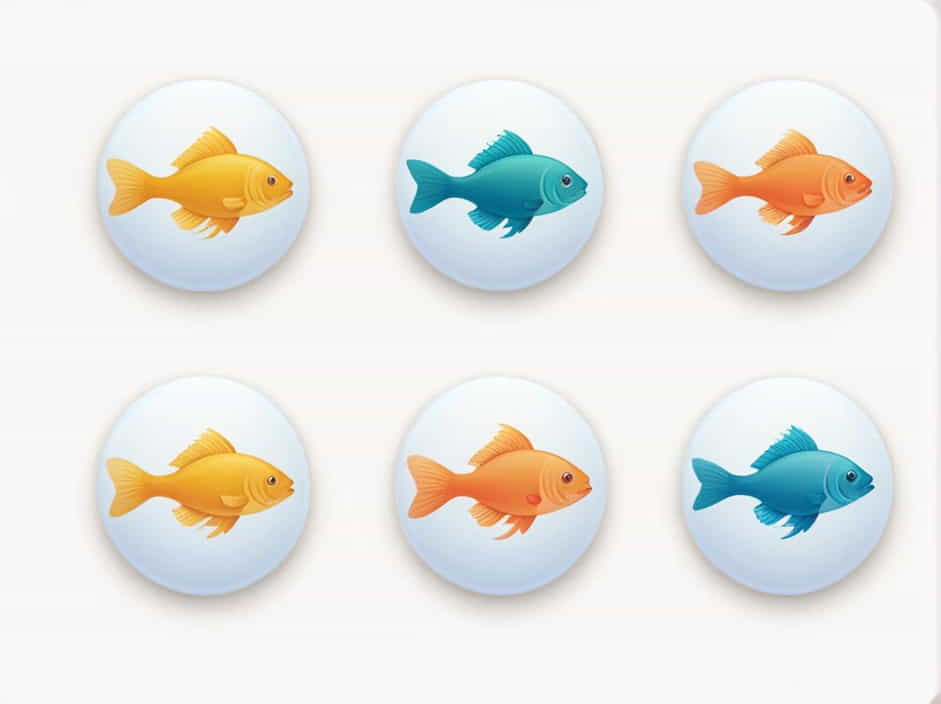Identifying fish species can be challenging due to their vast diversity in size, shape, and habitat. Scientists, marine biologists, and hobbyists use a dichotomous key to simplify the process. This tool helps identify fish based on a series of choices that lead to the correct species.
This topic explores how a dichotomous key works, provides examples of dichotomous key answers for fish, and explains why this method is important in marine biology.
What Is a Dichotomous Key?
A dichotomous key is a tool that helps identify organisms by following a series of two-part choices. The word "dichotomous" means divided into two, meaning each step presents two possible answers. These choices narrow down the possibilities until the correct species is identified.
Why Use a Dichotomous Key?
-
Helps identify fish accurately based on physical features.
-
Organizes species into groups for easy classification.
-
Used by students, researchers, and fishermen to distinguish similar-looking fish.
-
Helps track biodiversity and conservation efforts.
How to Use a Dichotomous Key for Fish Identification
To use a dichotomous key, you start at the first question and follow the steps based on the fish’s characteristics. Each decision point leads to another pair of choices until the fish is correctly identified.
Here’s an example of a simple dichotomous key for fish:
-
- Fish has a jawbone → Go to 2
- Fish has no jawbone → Go to 10
-
- Fish has scales → Go to 3
- Fish has no scales → Go to 5
-
- Fish has a rounded tail → Go to 4
- Fish has a forked tail → Tuna (Thunnus)
-
- Fish has barbels (whisker-like structures) → Catfish (Siluriformes)
- Fish has no barbels → Bass (Micropterus)
-
- Fish has an elongated body → Eel (Anguilliformes)
- Fish has a short, compact body → Pufferfish (Tetraodontidae)
By continuing this process, you can identify different species of fish step by step.
Dichotomous Key Answers for Common Fish Species
Here are some common fish species and how they can be identified using a dichotomous key.
1. Bass (Micropterus)
-
Has a jawbone.
-
Has scales.
-
Tail is not forked.
-
No barbels.
2. Catfish (Siluriformes)
-
Has a jawbone.
-
Has scales.
-
Has barbels around the mouth.
-
Bottom-feeding fish.
3. Tuna (Thunnus)
-
Has a jawbone.
-
Has scales.
-
Forked tail.
-
No barbels.
-
Fast-swimming ocean fish.
4. Eel (Anguilliformes)
-
Has a jawbone.
-
No scales.
-
Elongated body.
-
Slithers through water like a snake.
5. Pufferfish (Tetraodontidae)
-
Has a jawbone.
-
No scales.
-
Short, round body.
-
Can inflate itself when threatened.
Why Is a Dichotomous Key Important?
1. Helps in Scientific Research
Scientists use dichotomous keys to classify and study different fish species. This helps in understanding ecosystems and identifying new species.
2. Useful for Fishermen and Hobbyists
Fishermen and aquarium enthusiasts use this tool to identify fish correctly, ensuring they follow fishing regulations and proper aquarium care.
3. Aids in Conservation Efforts
By identifying fish species accurately, conservationists can monitor endangered species and protect marine biodiversity.
4. Assists Students in Learning
Students studying biology use dichotomous keys to understand classification systems and improve their observational skills.
Fun Facts About Fish and Identification
-
The ocean sunfish (Mola mola) is the heaviest bony fish in the world.
-
The anglerfish uses a light-producing organ to attract prey.
-
Tuna can swim up to 43 miles per hour, making them one of the fastest fish.
-
Some fish, like the clownfish, can change their gender during their lifetime.
-
The Coelacanth, once thought extinct, was rediscovered in 1938.
Using a dichotomous key is one of the most effective ways to identify fish species. This method breaks down complex classification into simple, easy-to-follow steps. Whether you’re a student, scientist, fisherman, or aquarium hobbyist, understanding how to use this tool can help you accurately recognize different fish species.
By practicing fish identification, we can enhance marine research, support conservation efforts, and appreciate the diversity of aquatic life.
